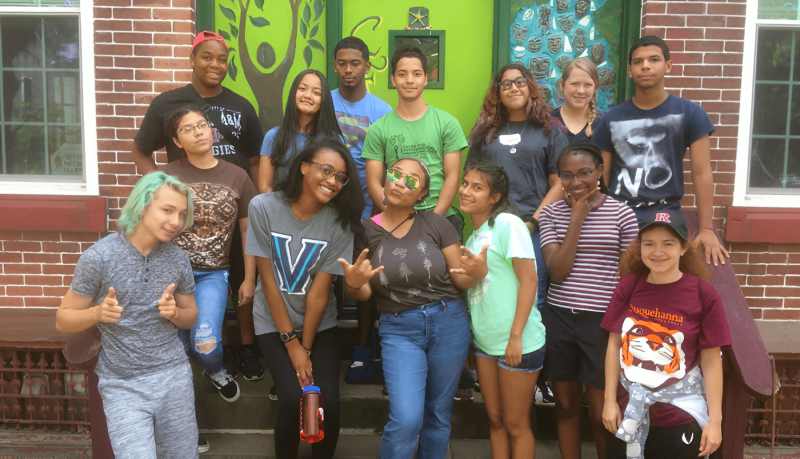
Founded in 2007, the Center for Environmental Transformation (CFET) is devoted to promoting environmental awareness, community connection, and environmental justice in Camden, New Jersey. Camden is indeed poor – 47% of residents have a household income of $25,000 or less. The city is racially diverse: 51% Hispanic, 41% Black. Forty-six percent of the population do not speak English at home, and 44% say that they do not speak English well. Much of CFET’s work focuses on the Waterfront South community, a neighborhood of less than one square mile adjacent to a power plant, a trash incinerator, a sewage plant, a scrap yard, an auto wrecker, and boarded-up factories. CFET engages residents in addressing these environmental challenges, advocating for clean air and healthy food, and empowering residents to voice their concerns. One CFET initiative, funded by the National Coastal Resilience Fund, is convening residents and experts to create natural systems as protection from coastal hazards.

The pile is about 300 feet by about 150 feet and it took up most of a block in a heavily industrial area of South Camden that’s surrounded by residential streets. Phaedra Trethan
The Center for Environmental Transformation is a small organization (under 20) comprising staff and board members who live in and around the community they serve. The organization promotes leadership development through workshops and community initiatives. They maintain local urban gardens and raise money through sales of self-produced hot sauce and honey. The summer youth program teaches Camden teenagers to manage the program’s gardens and run the weekly farm stand, thereby gaining valuable life skills. Local participation in air quality monitoring and participation in community legislation initiatives is supported and encouraged. CFET provides local resources to empower residents to report pollution as it occurs. The nonprofit is currently recruiting volunteers for a task force designed to tackle local environmental issues and improve citizen representation to the New Jersey Department of Environmental Protection, Camden City Council, and other government organizations.

CFET manages approximately 1/2 acre of gardens across three sites.